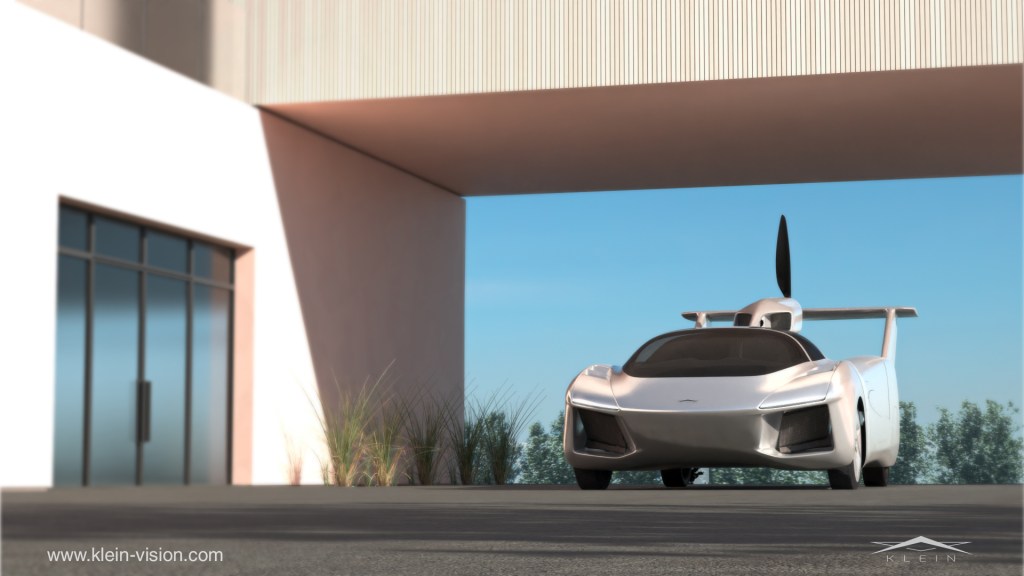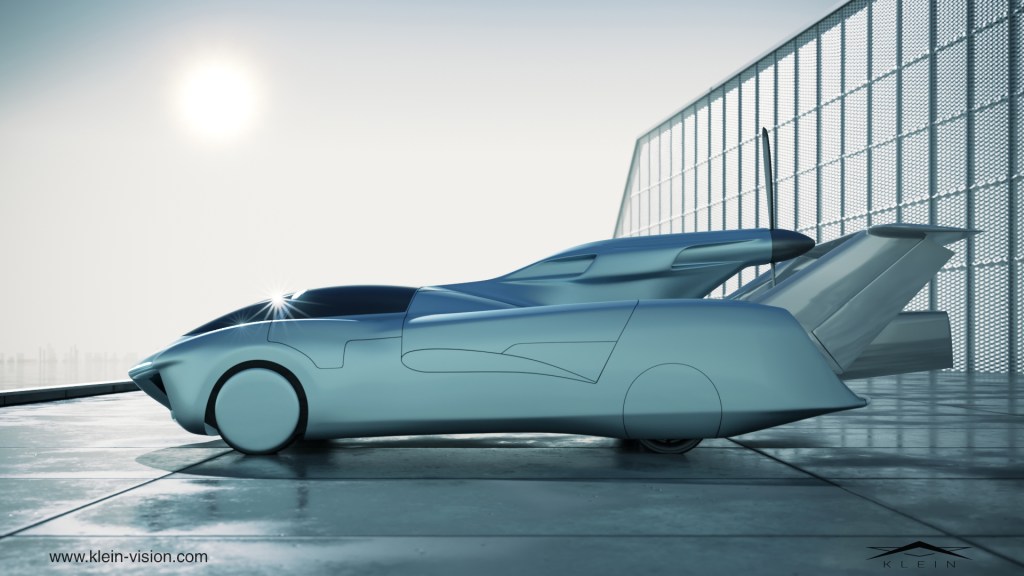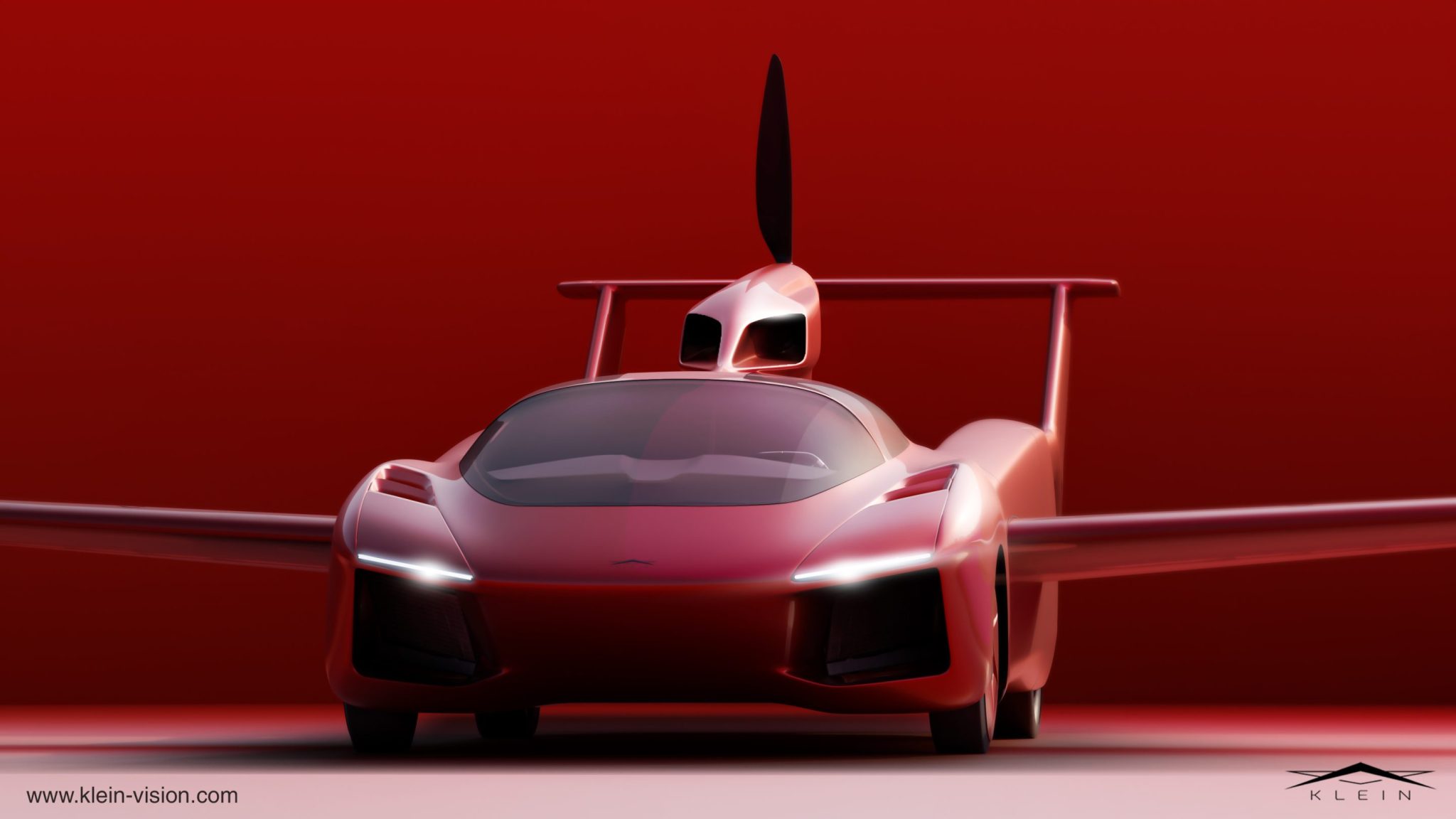It appears to be a crude drawing from
The Jetsons
Yes, it comes with a price tag that might instinctively lead some to categorize it as part of the “billionaires’ plaything” club—and for now, this could indeed be where the item fits in.
However, nobody in the transportation and aviation sectors is laughing anymore about the idea of a flying car. Actually, corporations are investing substantial resources into this concept. The world is much closer now to seriously considering the real-world uses of what could have previously appeared as an outlandish ambition.
This idea became even more apparent in early May when a company called Klein Vision, based in Slovakia,
unveiled the production prototype
At an event in Beverly Hills, the firm unveiled its fixed-wing flying car. Their previous prototype was showcased earlier as well.
AirCar
, after 35 years of development, has already been considered
airworthy
by the Slovak Transport Authority, having accumulated more than 170 flight hours along with numerous takeoffs and landings under their belt. If the new prototype receives certification in September, the model might enter production the following year, and Klein Vision has already begun preparations.
sold rights
to produce the automobile within a restricted area of China.
Unlike many other prototypes in this growing sector, AirCar truly functions as both a street-legal automobile and an accredited airplane equipped with fixed wings—not a hovercraft or VTOL, terms used in the field. (VTOL stands for Vertical Takeoff and Landing vehicles.) Operating an AirCar necessitates holding both a driver’s license and a pilot’s license.
Even though the cost might fall between $800,000 and $1.2 million for a dual-seater model, AirCar may go down in history as more than just a luxury item for enthusiasts. According to Klein Vision officials, the ability of this vehicle to completely transform into an aircraft within under two minutes holds significant potential, particularly in regions lacking proper road networks.
“You have the option to depart from any airfield with a fairly brief runway—or even from a patch of green grass,” says Anton Zajac, who is one of the co-founders of Klein Vision.
If you’ve got 600 feet of space for your lawn, you’re all set. It’s akin to something from a James Bond film—push a button and it changes by itself. The wings extend, the tail deploys, turning it into an airplane. Then you can take off.
If this seems like science fiction, keep in mind that the AirCar is merely one example among many.
full field
of competitors
aiming to enter the air/ground transportation sector. Numerous businesses are focusing on developing VTOL designs and manufacturing processes (or eVTOLs, which stands for electric versions). These vehicles use a vertical takeoff similar to helicopters, aligning closely with the conventional concept of a flying car—a significant departure from Klein Vision’s offering.
“Needing an airport for takeoffs doesn’t solve the core issue of extended travel times caused by congestion, which amounts to about $4 trillion worth of problems. It actually adds more time to your journey,” explains Jim Dukhovny, who runs a company based in Silicon Valley.
Alef Aeronautics
One such company aims to attract consumers looking to bypass traffic congestion in densely populated urban centers. Nonetheless, “We’ve been tracking AirCar’s development and are genuinely impressed by the engineering feats accomplished by Klein Vision,” remarks Dukhovny.

The creation of AirCar could address various requirements. Picture this: You drive up to an airport and subsequently take off in the very same vehicle. After touching down at your nearby destination airport, the aircraft transforms back into a car; you can then drive directly from the runway to your garage without needing space in an airport hangar.
In its most recent version, Klein Vision’s creation can travel up to 600 miles or even further, according to Zajac. The firm is currently developing three engine variants, which offer between 280 and 340 horsepower. AirCar comes equipped with three gasoline reservoirs that together hold up to 160 liters of fuel. Additionally, when driven on land, this vehicle can achieve speeds over 120 mph with a distance capability of about 500 miles.
It creates quite an impactful video demonstration. However, can these applications extend further than just a wealthy professional aiming to travel several hundred miles to attend a meeting, preferring not to take an Uber to the airport and wait in line for a commercial flight?
This response could shape the future demand for aircraft such as the AirCar. Zajac pointed out that locations featuring an airstrip—or even a flat surface suitable for takeoff and landing—could become accessible using this vehicle. This advancement might be particularly impactful for reaching isolated rural regions or islands, conducting rescue missions, and various other applications.
Nevertheless, Zajac states, “The development of AirCar isn’t driven by efforts to address worldwide issues.” Instead, it represents the culmination over several decades of continuous invention and experimentation by Stefan Klein, one of the founders of Klein Vision. Both his father and grandfather were also pioneers who created their own flying models prior to him. As the youngest member of his family, Klein served as his father’s test pilot—an experience marked by numerous injuries, according to Zajac. The AirCar comes equipped with a ballistic parachute for emergency situations.
Certainly, the cost is quite steep, and acquiring a pilot’s license proves costly and demanding for beginners. Conversely, Zajac mentions, “There are roughly 250,000 light aircraft in the United States. If we could substitute 5% of them, our business would thrive.”
Whether the U.S. is prepared for a surge of flying vehicles is indeed a valid query. Recent occurrences, including the
horrific crash
involving a commercial jet and a military helicopter near Washington, D.C., have heightened concerns about congested airways and how to safely navigate them.
Managing air traffic remains unresolved for now, with everyone focused on finding safer ways to handle crowded airspace,” explains airworthiness specialist Kyriakos Kourousis, who is also an associate professor at the University of Limerick’s engineering school. “The incident involving the Potomac River acts as a cautionary tale, highlighting issues such as the consequences of boosting flight volumes without compromising mobility.
In this regard, products such as the AirCar might initially have an edge when it comes to entering the market. Being dual-purpose vehicles, they must comply with regulations for both cars and aircraft. In the near future, however, their numbers will likely remain too low to significantly impact the sky traffic.

But for
Klein Vision
,
Pal-V,
Alef Aeronautics
, Oregon-based
Samson Sky
And numerous others; considering things as they stand now, we’re still quite early in this process. If public interest ultimately grows strong enough to justify large-scale manufacturing, it’s probable that costs will go down. At some future time—though certainly not anytime soon—the expense required to acquire certain models might become considerably more affordable for consumers.
“The aim of the Switchblade is to address local transportation needs by enabling individuals to travel according to their own timetable, reaching more than ten times as many destinations compared to traditional commercial flights, all while experiencing fewer inconveniences and accomplishing this in under half the duration,” explains Sam Bousfield, CEO of Samson Sky. He was discussing his firm’s innovative three-wheeled, roadworthy device, which falls into the category of experimental aircraft. The company intends to commence flight tests for one of its production versions come November; estimates place the anticipated price tag somewhere within the lower range of $200,000s, contingent on component costs.
The entry of AirCar into its pre-production stage, along with the company’s intention to commence sales by 2026, could set off a significant drive towards widespread adoption of vehicles designed for both terrestrial use and low-altitude airspace travel. In a recent forecast, J.P. Morgan suggested that the eVTOL sector might see substantial growth.
might be valued at $1 trillion
By 2040, it’s a competition to secure slices of that market, even though it’s highly regulated.
Although vertically operating vehicles have their advantages, they generally face restrictions when it comes to distance and cargo capacity,” explains Brian Sagi, an aerospace authority and the executive chair at C Cubed Aerospace. “Moreover, VTOLs struggle due to requirements for charging facilities and landing pads, the development of effective regulations, as well as specialized pilot training for this distinct class of aircraft.
In comparison, over 90% of the US population resides within 25 miles of a public-use airport, “which means you could potentially fly into this airport and then drive away using a flying car,” according to Sagi.
Set to land at an airfield close to you? Unlikely. Yet, it’s no longer purely the realm of sci-fi, despite some participants still expressing disbelief over it all. “I believe,” states Zajac, “that having a vehicle capable of flight is nothing short of miraculous.”
This tale was initially showcased on





